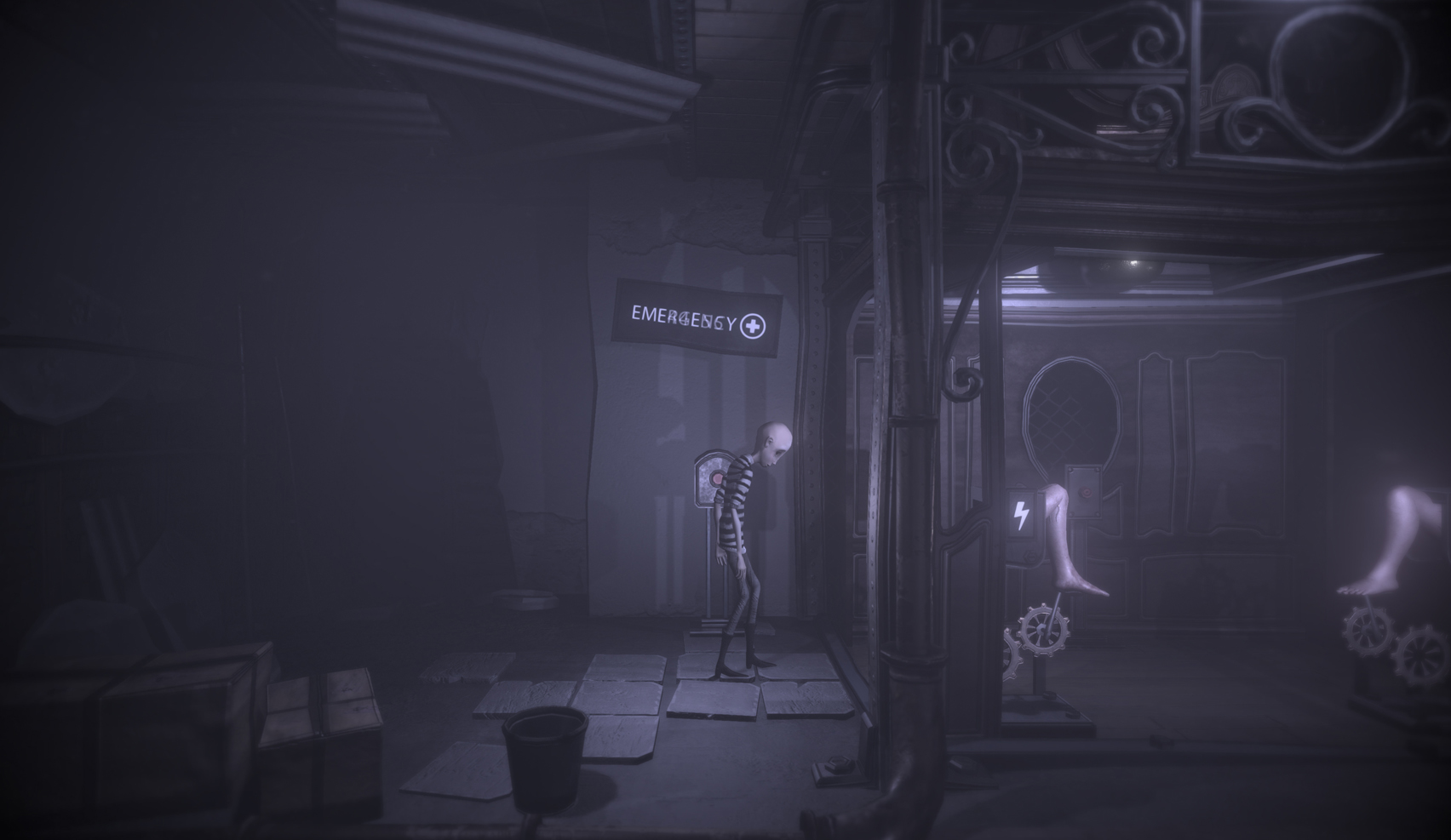

While these puzzles are traditional, their presentation is anything but. There’s a number of room sized puzzles that require Lloyd to rotate sections of the walls to ensure a wire is connected from one end of the space to the other. There’s gear shape puzzles that ask you to move a link between 2 shapes so that one end of the link can find its way into a particular hole.

buttons that need to be pressed in a particular order or mazes to navigate. In the former, you’re asked to solve switch puzzles you might have seen a hundred times before e.g.

The puzzles in Darq are a mix of classics with some brain teasers that are totally unique to this game. In either case, they constantly raise the questions, “what’s going on here?”, “what are you?” and “why are you hunting Lloyd?”. Instead, there’s a persistent cast of weird beings that stalk Lloyd though the game, either from the shadows, appearing just out of view only to disappear, or as part of Darq’s lattice of puzzles to overcome. There are dream diaries that expand on the intentions of the plot but they’re very well hidden (I had to use a guide to find 3 of them) and don’t explicitly explain anything. There’s no moment to moment story line or dialogue to follow as Darq allows the player to make their own interpretation of what’s going on. The first 5 chapters of the main game all begin as the main character Lloyd (a bald gangly man with a serious case of panda eyes) gets into a bed and is then transported to twisted locales from which he needs to escape, back to his bed. The plot to Darq is intentionally ambiguous and it’s all the better for it.


 0 kommentar(er)
0 kommentar(er)
